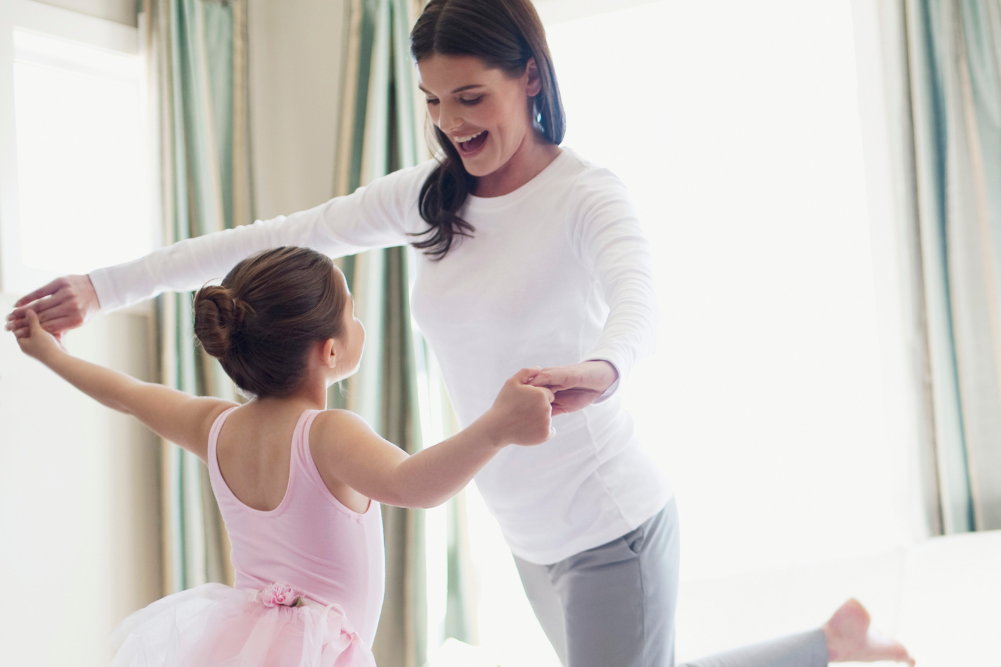Meet me at the barre
The culture of ballet is rapidly evolving to include dancers of all ages and abilities, with research demonstrating wide-ranging benefits for physical and mental wellbeing.
Do you remember the freedom and joy of dancing when you were a child? Whether you took formal dance classes or simply enjoyed spinning and twirling across the living room to your favourite song, it’s likely that dance has fed your soul in one way or another.
However, as adults, we are usually rushing from one commitment to the next, driven by our endless “to-do” list with exercise often becoming another box to be ticked and the notion of engaging in an activity for the sheer joy of it seeming like an unnecessary indulgence.
Yet there is a growing trend of adults consciously pushing back on these pressures and defying ageist attitudes to pursue ballet in midlife and into their senior years. Not only are they reclaiming the joy of dance but they are also reaping a multitude of benefits spanning body, mind and soul.
The growth of adult ballet
Once seen as the domain of the upper class, with a narrow ideal of who could and could not be a dancer, ballet is rapidly evolving. While the pandemic has played an integral role in this evolution, with many elite ballet companies opening their digital doors to dancers of all ages and abilities through free online classes, ballet’s cultural shift has been building for a number of years.
In 2018, the Royal Academy of Dance, a globally recognised ballet education and training organisation, launched Silver Swans, a revolutionary program designed specifically for adults. Recognising the growing body of research demonstrating the benefits of dance, the Royal Academy of Dance developed Silver Swans as a fun and social method to improve mobility, posture and coordination. Although the program is aimed at dancers aged 55 and above, Silver Swans classes are open to participation in physical activity.
Martin reflects that although many of her friends have asked her whether her fitness has improved since starting ballet classes, she admits the physical benefits are secondary for her. “That’s not the point for me,” she says. “It’s just that it is fun!”
Matters of the mind
Having fun is an essential aspect when it comes to the psychological benefits of dance. A biomolecular study published in the American Journal of Dance Therapy found participation in organised dance increased the “happy hormone”, serotonin, by 10 per cent and reduced the “stress” hormone, cortisol, by 15-20 per cent.
Cooper recognises that ballet is many of her students’ “happy place”, where they come to relax and let go of the stressors of their lives outside of dance.
“Sometimes I’ll watch students in class and I can just see that they are having their moment for the week, it’s their time… It’s like mindfulness in a way because you have to focus on what you’re doing and so it allows you to let go of the rest of life.”
Martin is emphatic that joy is central to her pursuit of ballet. “It’s such a joyful experience and something I hope I can continue for many, many years,” she says. “As adults, there’s that sense of always having to be productive and doing something for an end point but you’re also allowed to do something just because it’s fun.”
In addition to the psychological feel-good aspects of ballet, Cooper keenly highlights the cognitive aspects that are also beneficial to brain health. “You are using both sides of your brain, which is not common in many other forms of exercise,” she explains. “You’re using the artistic side of your brain and the logical, mathematical side of your brain because you’re counting music and remembering patterns.”
Plié prescription
The cognitive aspects of choreographic sequencing and repertoire is one of the many elements that support ballet as therapy. Programs such as Dance for Parkinson’s, Ballet for Brain Injury and dance4wellbeing have been built upon the research that demonstrates the benefits of ballet for people with conditions such as Parkinson’s disease, dementia, Alzheimer’s and brain injury.
These programs are designed to focus on the movement of dance, rather than approaching movement from a clinical perspective, and have a strong sense of musicality to guide and inspire. Importantly, participants are treated as dancers rather than patients, which in itself is integral to an individual’s sense of confidence, autonomy and wellbeing.
A study published in the Arts & Health journal recounts the almost magical effect ballet has on a male dance participant living with Parkinson’s disease: “M enters the room slowly, bent at the shoulders, shuffling then pausing… then eases himself into a seat with his wife helping. An hour later, the iconic, stirring music of Romeo & Juliet is being played on the piano. M strides forward from the corner in time to the music, digging his heel into the ground as he marches, head up, arms swinging, with his cane no longer in sight.”
Examples such as this demonstrate not only how therapeutic and transformational dance can be, but also that is an innate aspect of being human.
“If you look at dance in a broader social setting, everybody dances, we dance at parties, it’s part of our culture,” Cooper says. “There is this inbuilt need inside of us to move and to dance and to respond to the music, and ballet is a great way to express that.”
Despite the intrinsic nature of dance, Martin reflects that perhaps a lack of confidence is responsible for holding many people back from connecting with this inner desire and pursuing their ballet dreams as an adult.
“A lot of people have said how brave it is [to take classes as an adult], perhaps implying that they wouldn’t feel confident enough, so it’s nice to say to them that they actually can too,” she says. “It’s an accomplishment without risk, and I think that’s really unique as an adult. I feel proud of myself, and it’s tricky as an adult to find things to point your finger at and say ‘I’m really proud’. There are not many times in life where both your child self and grown-up self feels delighted, and I think that’s good for the soul.”








